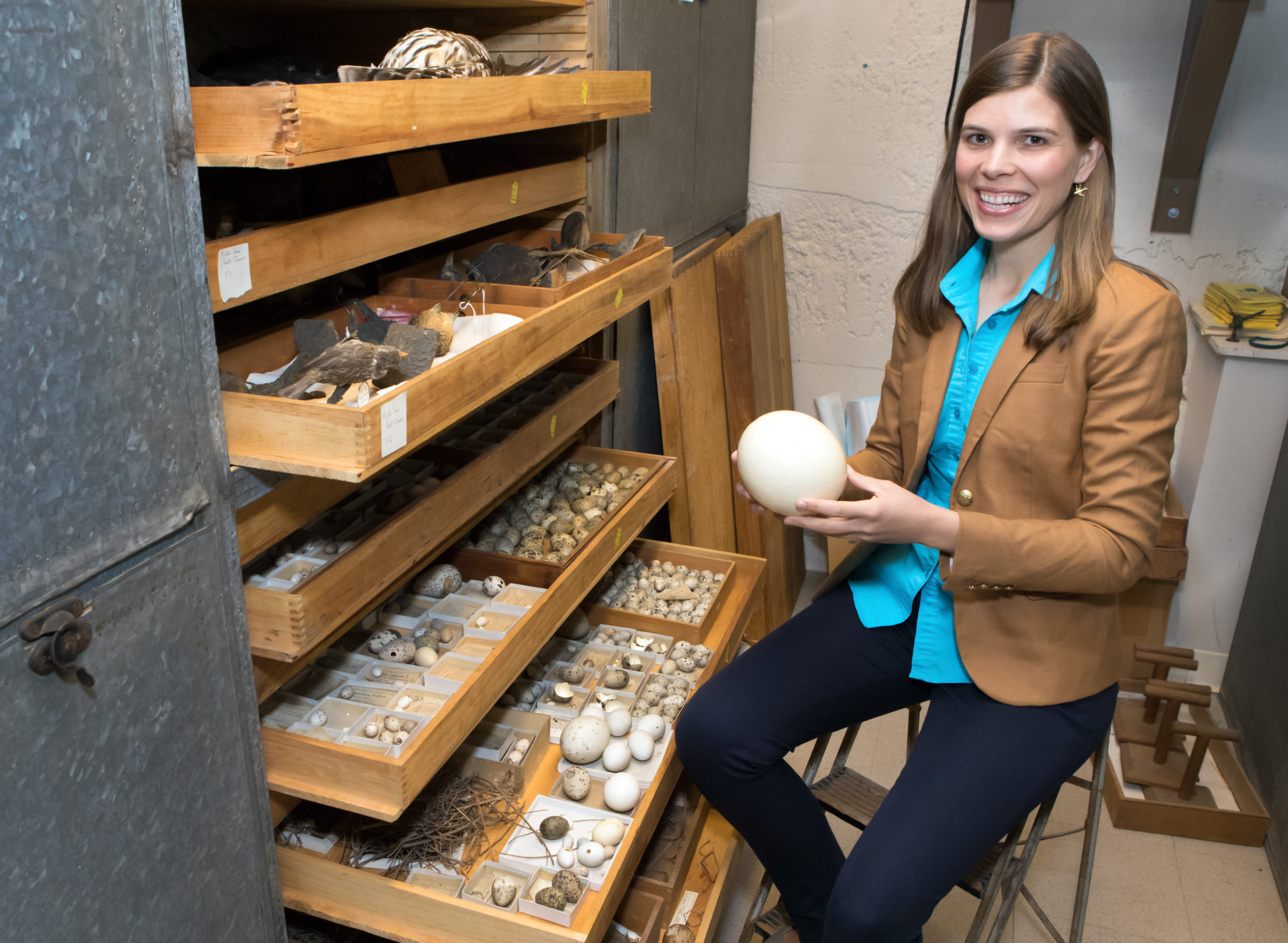Some of life’s simplest questions get swept under the rug for a long time — after all, the most widespread phenomena often require the most data to understand. Take the shape of the boring egg, for example. You probably thought eggs are was shaped the way they are so they won’t roll out of the nest or something. But a huge analysis shows the real reason eggs have their characteristic shapes may be completely surprising.
Recently hatched gull chick and eggs (Image: Mary Stoddard)
A new study from an international team of researchers reviewed a collection of nearly 50,000 eggs representing 1400 extant bird species. Their analysis seems to refute more popular ideas about why eggs are shaped the way they are, which invoke the number of eggs laid in a brood, or the location of the nest, as the main factor. Instead, the researchers favour a fairly surprising explanation for egg shape.
“Good strong fliers tend to lay eggs that are more asymmetric and more elliptical,” study author Mary Stoddard from Princeton told Gizmodo. “In finding this strong correlation, we could say that, on the global scale, egg shape is better predicted by flight ability than by, say, nest type or location.”
If that doesn’t seem like a huge deal to you, the study blew away every researcher I spoke to, and received a featured spot in Science, which published it today. Reaching this conclusion was truly a lot of work.
Stoddard and her team began by creating two metrics for egg shape, including ellipticity (was the egg more circle or more oval shaped) and asymmetry (was the egg symmetrical, or did it have a pointy side). They wrote a data analysis package (called the Eggxtractor, lol) to analyse the Museum of Vertebrate Zoology at the University of California Berkeley’s enormous egg collection. They were left with flying abilities as the strongest predictor of egg shape.

Mary Stoddard with some eggs (Image: Mary Stoddard)
This led them to hypothesise the internal anatomy of birds that allows them to fly well may also influence the shape of their eggs.
Flight ability, as Stoddard’s team measured it, is calculated by a metric called hand-wing index, which is really a measure of a wing’s pointedness. This means that some birds who glide, such as owls, might fly a lot but still have round eggs, which would indicate poorer overall flying ability.
But Stoddard was very careful to point out the limitations of this study, the main one being the ubiquitous correlation does not imply causation. Sure, the finding is really interesting, and researchers now have a well-informed hypothesis about egg shape to drive research forward. But “this is a correlation,” she said. “In the future, we need to do more work to understand what the underlying mechanisms may really be for egg shape formation as a function of body type changes.”
While this study has ruled out some hypotheses on a global scale, other researchers were cautious to point out that there might be some patterns in egg shape evolution that work on a more granular scale. “By taking the question across all birds at once, you end up with a generalised answer that is not necessarily true of individual instances,” said Richard Prum, professor of ornithology at Yale University. But he told me not to take this remark as a criticism — he too said the paper was “so far above previous publications in bird egg shape”, which has previously been “uncool science” relegated to “the most obscure journals”.
Prum and others fields were excited by the direction this new paper can take research in the future. “These guys opened up a whole new area of research,” said Prum. He’d like to see the team look at egg colour next. And Martin Sander, palaeontologist from the University of Bonn in Germany, told Gizmodo that this work could help us understand dinosaur egg shape too. Dinos are birds’ ancestors, after all, and were evolving things like changes in the way they walked and reproduced or flight. “We need to find more fossil eggs. That’s what [this study is] missing.”
The most exciting aspect of the new work may just be how many interesting ideas come simply from reviewing old museum collections, though, as well as how much we still have to learn about eggs. Stoddard, too is excited about the prospect of looking at dinosaur eggs. She said, “we would like to understand better how eggs change shape at the dinosaur-to-bird-transition.
[Science]
